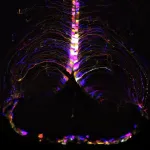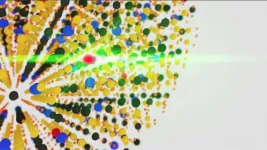(Press-News.org) A recent study published in Health Data Science led by Zhilong Zhang from the Institute of Medical Technology at Peking University Health Science Center and Professor Luxia Zhang from the National Institute of Health Data Science at Peking University has shed light on the complex relationship between smoking behavior and chronic kidney disease (CKD). Using data from over 500,000 participants in the UK Biobank cohort, the researchers conducted both traditional observational studies and advanced Mendelian randomization (MR) analyses to explore whether smoking behavior directly contributes to CKD.
While observational studies indicated a positive association between smoking status and the risk of CKD, the Mendelian randomization analysis revealed no evidence of a causal relationship. Specifically, genetic variants associated with smoking behavior did not show a direct causal effect on CKD development.
These findings suggest that the previously observed associations in observational studies might be influenced by confounding factors rather than a direct causal link. Researchers propose that factors such as diabetes and hypertension may act as mediators in the relationship between smoking and CKD.
“Our results emphasize the need for more detailed mediation analyses on large-scale, multi-ethnic datasets to fully understand the interplay between smoking and CKD,” said Professor Luxia Zhang. “While smoking remains a significant health risk factor, its direct role in CKD development requires further investigation.”
Future research will aim to address these complexities by analyzing the potential mediation pathways and exploring the role of other environmental and genetic factors.
This study provides valuable insights into CKD prevention strategies and highlights the importance of addressing confounding factors in public health research.
END
Study finds smoking linked to increased risk of chronic kidney disease in later stages
2025-01-01
ELSE PRESS RELEASES FROM THIS DATE:
System to auto-detect new variants will inform better response to future infectious disease outbreaks
2025-01-01
Researchers have come up with a new way to identify more infectious variants of viruses or bacteria that start spreading in humans - including those causing flu, COVID, whooping cough and tuberculosis.
The new approach uses samples from infected humans to allow real-time monitoring of pathogens circulating in human populations, and enable vaccine-evading bugs to be quickly and automatically identified. This could inform the development of vaccines that are more effective in preventing disease.
The approach can also quickly detect ...
Key players in brain aging: New research identifies age-related damage on a cellular level
2025-01-01
SEATTLE, WASH.—January 1, 2025—Scientists at the Allen Institute have identified specific cell types in the brain of mice that undergo major changes as they age, along with a specific hot spot where many of those changes occur. The discoveries, published in the journal Nature, could pave the way for future therapies to slow or manage the aging process in the brain.
Key findings
Sensitive cells: Scientists discovered dozens of specific cell types, mostly glial cells, known as brain support cells, that underwent significant gene expression changes with age. Those strongly affected included microglia and border-associated ...
Pupil size in sleep reveals how memories are sorted, preserved
2025-01-01
ITHACA, N.Y. – Cornell University researchers have found the pupil is key to understanding how, and when, the brain forms strong, long-lasting memories.
By studying mice equipped with brain electrodes and tiny eye-tracking cameras, the researchers determined that new memories are being replayed and consolidated when the pupil is contracted during a substage of non-REM sleep. When the pupil is dilated, the process repeats for older memories. The brain’s ability to separate these two substages of sleep with a previously unknown micro-structure is what ...
Revealing a key mechanism of rapid centromere evolution
2025-01-01
A joint research group team led by Sayuri Tsukahara and Tetsuji Kakutani of the University of Tokyo has clarified a mechanism of how retrotransposons, genetic elements that can “jump around” chromosomes and are known drivers of evolution, preferentially insert in the centromere. The findings were published in the journal Nature.
The centromere is the thinnest part of the chromosome that divides it into a long and short arm, much like how the waist separates the upper and lower body. Its role in transmitting information via cell division has been preserved ...
A tour de force: Columbia engineers discover new “all-optical” nanoscale sensors of force
2025-01-01
New York, NY—January 1, 2025—Mechanical force is an essential feature for many physical and biological processes. Remote measurement of mechanical signals with high sensitivity and spatial resolution is needed for a wide range of applications, from robotics to cellular biophysics and medicine and even to space travel. Nanoscale luminescent force sensors excel at measuring piconewton forces, while larger sensors have proven powerful in probing micronewton forces. However, large gaps remain in the force magnitudes that can be probed remotely from subsurface ...
Ancient DNA unlocks new understanding of migrations in the first millennium AD
2025-01-01
Francis Crick Institute press release
Under strict embargo: 16:00 GMT Wednesday 1 January 2025
Peer reviewed
Observational study
Ancient people
Ancient DNA unlocks new understanding of migrations in the first millennium AD
Waves of human migration across Europe during the first millennium AD have been revealed using a more precise method of analysing ancestry with ancient DNA, in research led by the Francis Crick Institute.
Researchers can bring together a picture of how people moved across the world by looking at changes in their DNA, but this becomes a lot harder when historical ...
MIT scientists pin down the origins of a fast radio burst
2025-01-01
Fast radio bursts are brief and brilliant explosions of radio waves emitted by extremely compact objects such as neutron stars and possibly black holes. These fleeting fireworks last for just a thousandth of a second and can carry an enormous amount of energy — enough to briefly outshine entire galaxies.
Since the first fast radio burst (FRB) was discovered in 2007, astronomers have detected thousands of FRBs, whose locations range from within our own galaxy to as far as 8 billion light-years away. Exactly how ...
Researchers reveal why the lung is a frequent site of cancer metastasis
2025-01-01
Leuven, 2 January 2024 – Researchers from the lab of Prof. Sarah-Maria Fendt (VIB-KU Leuven) and colleagues have uncovered that the availability of the amino acid aspartate is one reason why the lung is a frequent organ of metastasis. Their work appears in Nature and improves our understanding of cancer biology while providing the foundation for new therapeutic interventions in metastatic diseases.
A role for aspartate
More than half of cancer patients in whom the cancer spreads beyond the primary site have lung metastases. What makes the lungs such a ...
Aging may change some brain cells more than others
2025-01-01
EMBARGOED FOR RELEASE: Jan. 1, 2025, 11 a.m. ET
CONTACT:
NIAPressTeam@mail.nih.gov, 301-496-1752
Aging may change some brain cells more than others
NIH-funded mouse study provides roadmap for how aging may alter brain cell genetic activity
Based on new brain mapping research funded by the National Institutes of Health (NIH), scientists have discovered that not all cell types in the brain age in the same way. They found that some cells, such as a small group of hormone-controlling cells, may undergo more age-related changes in genetic activity than others. The results, published ...
Special issue of APA’s official journal focuses on psychedelic medication
2025-01-01
WASHINGTON, D.C., Jan. 1, 2025—As the body of research grows around the potential promise of psychedelic medications in psychiatry, many questions and challenges remain. The January issue of the American Journal of Psychiatry features a series of articles, including new research, reviews and commentaries, on the use of these treatments.
The issue addresses many of the ongoing challenges and looming questions in the field of psychiatric psychedelic research and treatment. These include issues relevant to basic ...




